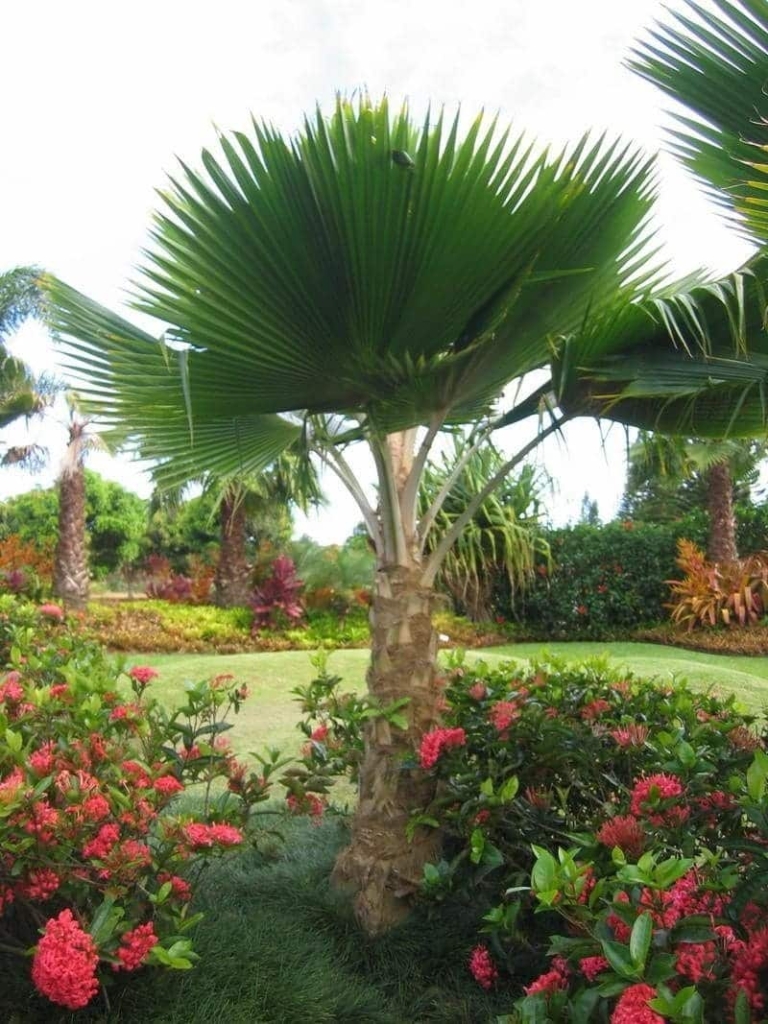The Fan Palm, scientifically known as Licuala, is a stunning, exotic plant native to the tropical regions of Asia. This plant is loved for its large, showy leaves that resemble Japanese fans, bringing an elegant, tropical touch to any garden or indoor space. In today’s post, I’ll share everything you need to know about caring for this natural beauty, from fertilization to pruning and general care.
Se você é um amante de plantas e está procurando uma maneira de dar um up no seu jardim ou decorar a sua casa com uma planta que exala elegância e charme, continue lendo. Vamos explorar juntos como manter sua Palmeira Leque saudável e exuberante.
How to grow and care for a fan palm tree at home

Fertilizing the Fan Palm Tree
Fertilization is essential to keep your Fan Palm looking beautiful and healthy. Fertilization should be done regularly, using organic compounds such as decomposing leaves and well-rotted manure. Mix these components around the base of the plant, but avoid direct contact with the trunk to prevent burns.
Recommended Fertilizer Types
- Organic Compound: Ideal for providing nutrients gradually.
- Corral Manure: It must be well cured to avoid burning the roots.
- Bone Meal: Used in small amounts to supplement calcium and phosphorus.
Correct Pruning
Pruning is essential to the health of your Fan Palm. Remove old and damaged leaves to allow new leaves to grow. Be careful when handling the plant, as it has thorns that can cause injuries. Wear protective gloves to avoid injury while pruning.
Tools Needed for Pruning
- Pruning Shears: For precise, clean cuts.
- Protective Gloves: To avoid injuries caused by thorns.
- Disinfectant: To clean tools before and after pruning.
Proper Watering
The Fan Palm does not like soggy soil. Water the plant every three to four days, depending on the humidity of the environment. In very hot climates, it is important to ensure that the plant receives enough water, but not too much.
Watering Frequency
- Hot Weather: Water every three days.
- Moderate Climate: Water every four days.
- Humid Climate: Adjust watering as needed to avoid soggy soil.
Ideal Location
This plant thrives in environments with high humidity and indirect light. Avoid exposing the Fan Palm to direct sunlight, especially during the hottest hours of the day. In regions with very cold climates, it is advisable to keep the plant indoors, in a well-lit place, but away from cold drafts.
Recommended Environments
- Inside the House: Near windows with indirect light.
- Shade Gardens: Locations with partial shade.
- Covered Balconies: Protected from direct sunlight and strong winds.
Pest Control
Although the Fan Palm is relatively hardy, it can be attacked by pests such as mealybugs and aphids. Use natural methods to control these pests and keep the plant healthy.
Control Methods
- Natural Insecticides: Like neem oil.
- Mechanical Methods: Manual pest removal.
- Prevention: Keep the plant clean and healthy to avoid infestations.
Additional Tips
- Use a small amount of bone meal mixed into the soil to provide additional nutrients.
- Make sure the soil is well drained to avoid water accumulation.
- In very dry climates, increase the frequency of watering and consider using a humidifier near the plant.
Main Questions about the Fan Palm Tree
1. How often should I fertilize the Fan Palm?
Fertilization should be done every two months using organic compounds such as decomposing leaves and well-rotted manure.
2. Can the Fan Palm be grown indoors?
Yes, as long as it receives indirect light and is in a location with good humidity.
3. How to prevent leaves from turning yellow?
Make sure the plant is not exposed to direct sunlight and that it is watered properly, avoiding both lack and excess water.
4. What is the maximum height that the Fan Palm can reach?
It can grow up to about two meters, depending on growing conditions.
5. Can I use chemical fertilizers on the Fan Palm?
It is preferable to use organic fertilizers, but if you choose chemical fertilizers, use them in moderation to avoid damaging the plant.
6. Is the Fan Palm resistant to pests?
It is relatively resistant, but can be attacked by scale insects and aphids. Use natural insecticides to control these pests.
Did you like this amazing tip? If so, share it with your friends and on your social networks. Leave your comment below and your suggestions. Receive it daily here on our website. Blog of ideas and tips free and follow us on Google News too. Thank you!